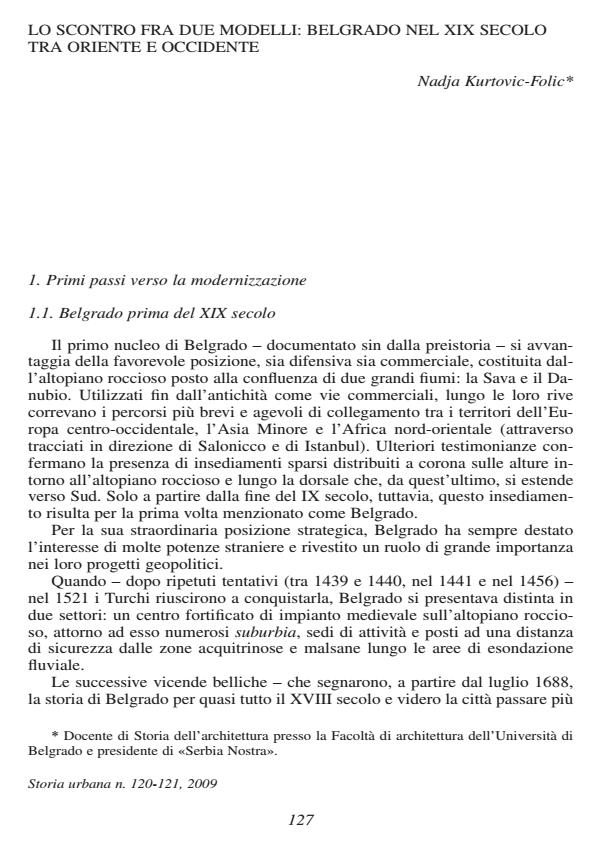Lo scontro fra due modelli: Belgrado nel XIX secolo tra Oriente e Occidente
Journal title STORIA URBANA
Author/s Nadja Kurtovic-Folic
Publishing Year 2009 Issue 2008/120 Language Italian
Pages 22 P. 127-148 File size 4345 KB
DOI 10.3280/SU2008-120006
DOI is like a bar code for intellectual property: to have more infomation
click here
Below, you can see the article first page
If you want to buy this article in PDF format, you can do it, following the instructions to buy download credits

FrancoAngeli is member of Publishers International Linking Association, Inc (PILA), a not-for-profit association which run the CrossRef service enabling links to and from online scholarly content.
The clash between two models: Belgrade in the XIX century between East and West - The 1830s in Belgrade were marked by intensive building activity, mostly as the result of the great enthusiasm following the conquest of the semi-political and national independence of the Principality of Serbia (1815). Belgrade became the seat of the court of in Duke Milos Obrenovic in 1817. In the following ten years, it went through a markedly dynamic period of working out plans for urban transformation and putting them into action. The city is a complex mosaic in its structure, its daily life and its social and ethnic composition where a great number of Turks subject to the Ottoman Port, Jews and immigrants from neighboring countries lived side by side with a large Christian population. Important hub of river transport on the Danube and the Sava, Belgrade witnessed the projects for the expansion of the city that tended to run along the more trafficked transportation lines and to reduce the irregularity of the structure of the ancient city. At the end of the nineteenth century the theoretical conflicts between the eastern and the western city were resolved.
Nadja Kurtovic-Folic, Lo scontro fra due modelli: Belgrado nel XIX secolo tra Oriente e Occidente in "STORIA URBANA " 120/2008, pp 127-148, DOI: 10.3280/SU2008-120006